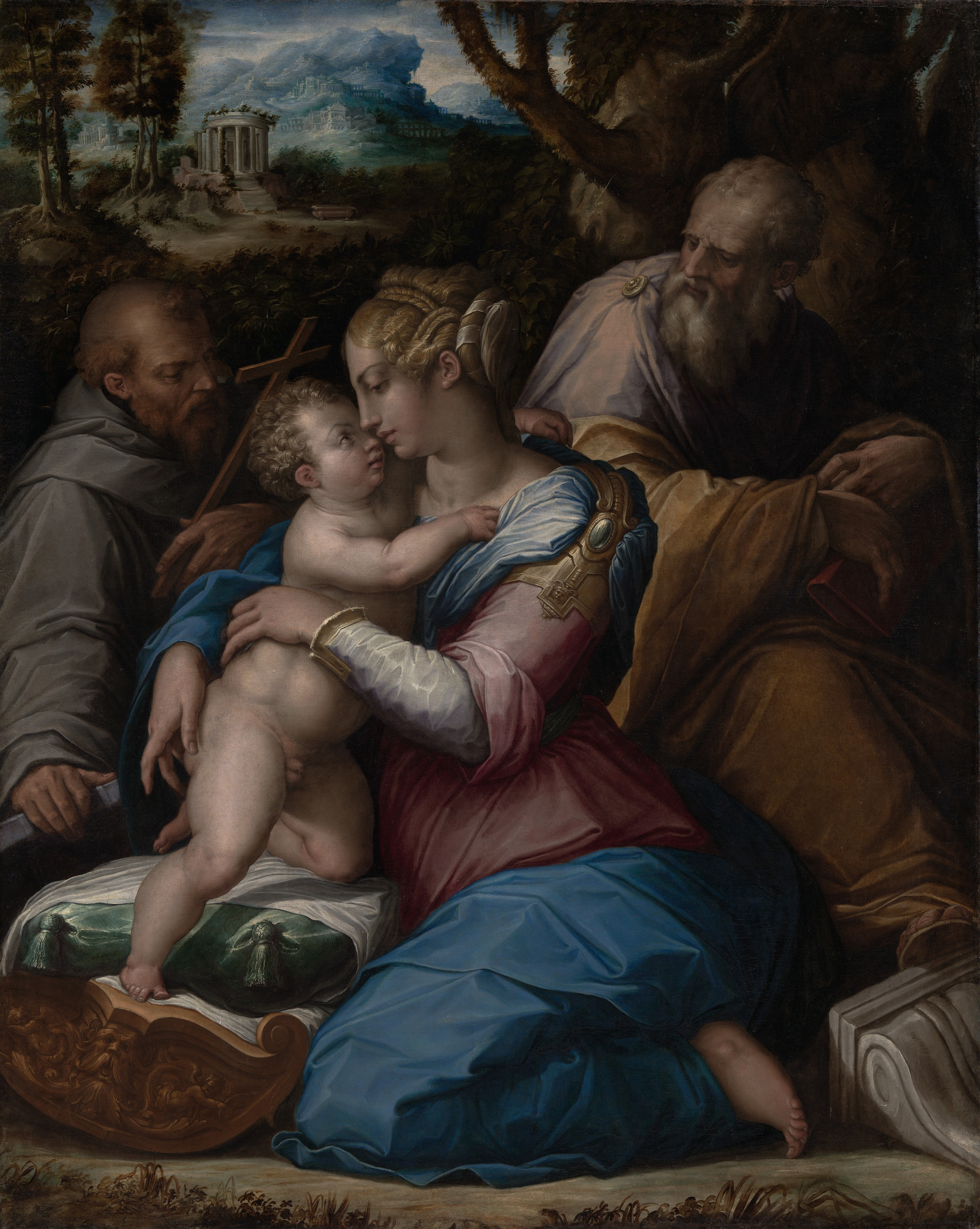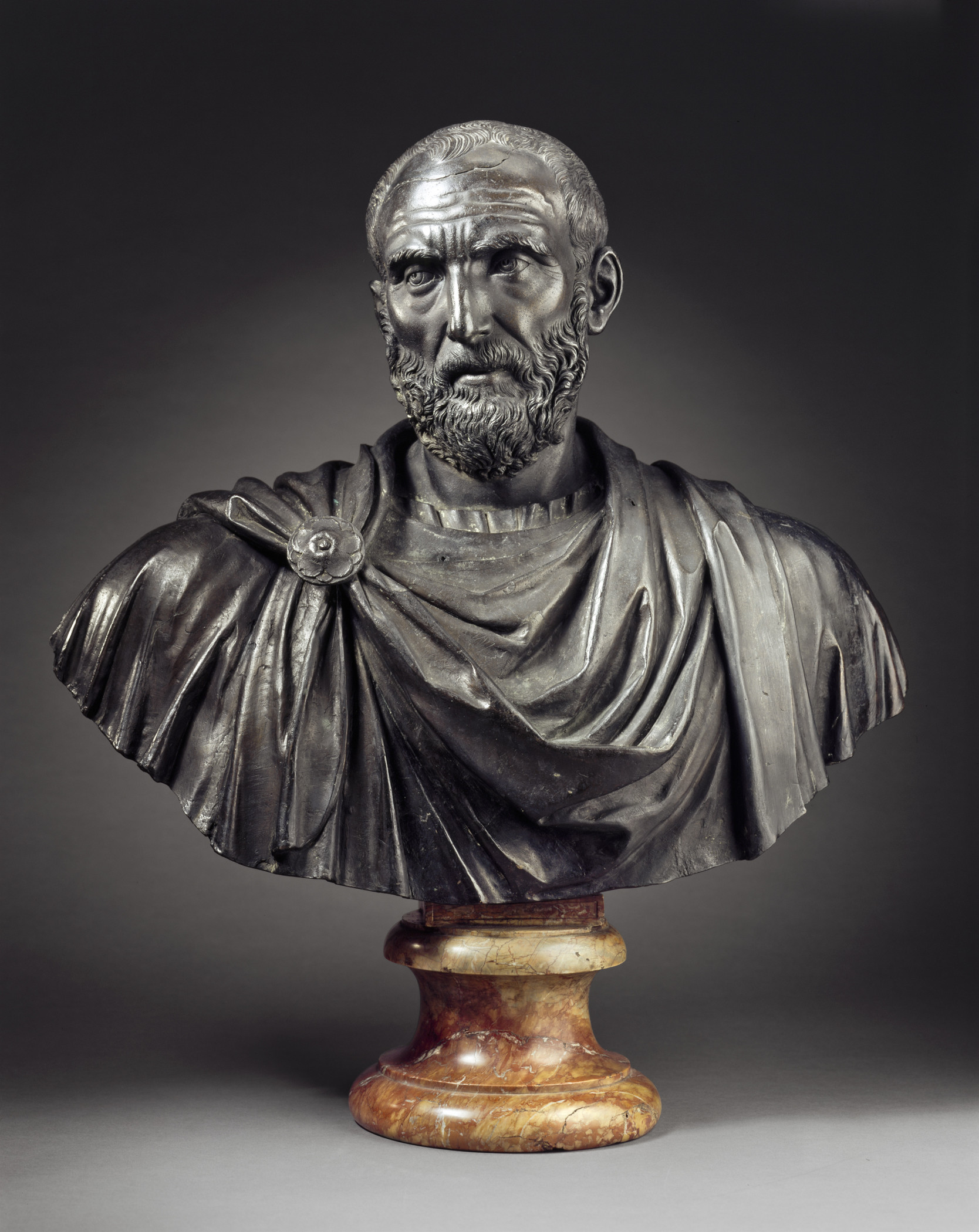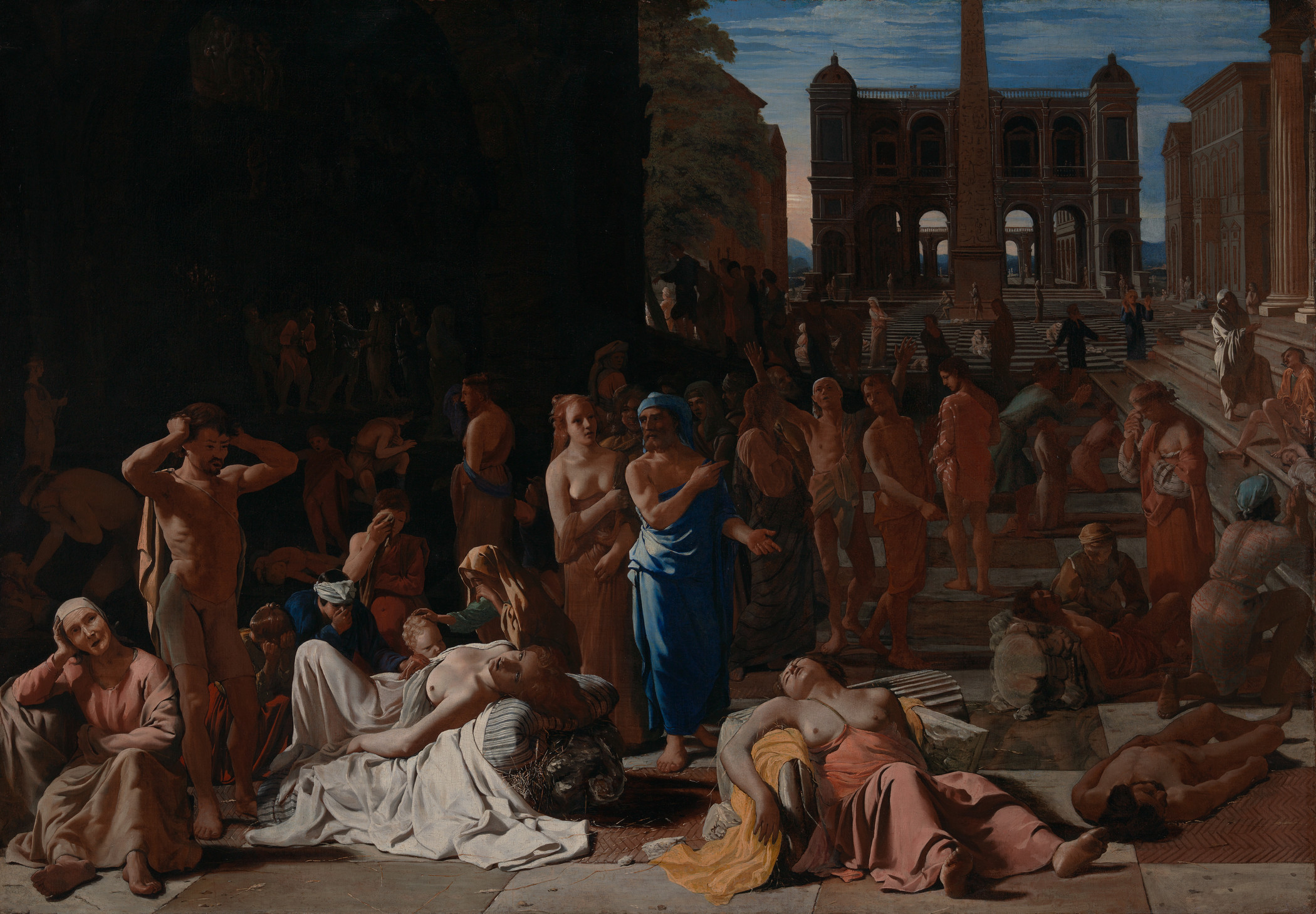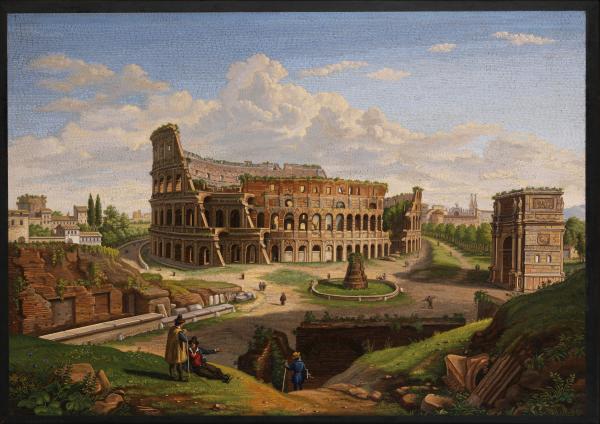One of the first things that may strike visitors when they enter the exhibition To Rome and Back, Individualism and Authority in Art, 1500–1800 is that many of the show’s paintings, sculptures, decorative arts, prints, and textiles were not, in fact, produced in Rome. While the city was an important center of patronage and artistic production for much of the period covered by the show, it also exerted a powerful influence on artists working far beyond the city’s limits, throughout Europe and beyond. In works produced by these artists, Rome emerges as a place, an idea, or as a network of associated symbols and forms.

For example, Giorgio Vasari’s Holy Family with Saint Francis in a Landscape was created far from Rome, for a wealthy Florentine residing in Venice. It depicts the Holy Family—Joseph, Mary, and the infant Jesus—together with Saint Francis of Assisi, the 13th-century founder of the Franciscan order. Yet, the world of ancient Rome is also very much present. The epaulette Mary wears on her left shoulder indicates she is dressed as a Roman soldier; and the setting is not the Holy Land but the Roman countryside, with the ruins at Tivoli (outside of Rome) visible in the background.

Indeed, figures and images from ancient Rome played an important role in attempts by wealthy Florentines to bolster their status and power. A 16th-century portrait bust in the exhibition depicts Lucius Junius Brutus, founder of the Roman republic, who overthrew the tyrannical king Tarquin the Proud in 509 BCE. It was commissioned by Lorenzo di Piero Ridolfi (1503–1576), a wealthy Florentine whose family had been exiled by the powerful Medici clan, which dominated Florence at the time. The story of Lucius Brutus’s triumph over his enemies may have resonated with the Ridolfi family because of their own struggles for power. Sculptures like this one, based on ancient models, populated princely collections up and down the Italian peninsula.

The allure of Rome also provided inspiration for artists hailing from north of the Alps. In Michael Sweerts’s Plague in an Ancient City, an imaginative rendering of ancient Rome, or a city much like it, provides the backdrop for this scene of high drama. Two female figures—idealized beauties—succumb to the plague, while nearby and behind them, others wail, grieve, or await their fate. Several of the figures appear to be based on classical statuary. Born and raised in Brussels, Sweerts spent more than a decade in Rome, and in this picture, executed after he had left the city, he looked to Rome’s classical past to explore moral and philosophical subject matter.

Rome continued to stoke the imaginations of patrons and artists throughout Europe in the 18th century. For example, in a monumental picture in the exhibition’s final gallery, the French artist Hubert Robert reimagines Rome as an idealized, romantic landscape. The picture’s setting is a fanciful take on an actual site: the Villa d’Este, a 16th-century villa outside of Rome famed for its terraced gardens and fountains. Robert included a fantastical mix of classical statuary and relief, Roman peasants, and strollers in fashionable French attire. Like Sweerts, Hubert spent time in Rome (he spent more than a decade there, beginning in 1754), then returned home, where he incorporated the city’s visual landscape into decorative pictures for a wealthy clientele.
Visitors to the exhibition are encouraged to imagine for themselves the various ways in which Rome’s monuments, people, and landscapes, captured in these masterpieces of LACMA’s permanent collection, inspired audiences in their own time, and continue to inspire in ours.
To Rome and Back: Individualism and Authority in Art, 1500–1800 is on view in the Resnick Pavilion through March 17, 2019.



